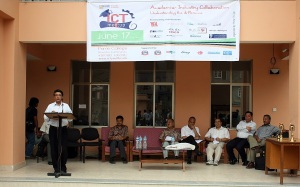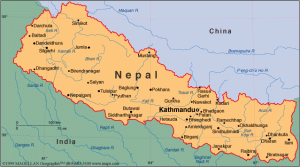Here’s my 3 tips to thriving in Nepal.
- Positive
- Proactive
- Patience
Positive
Having a positive attitude is important. When you have a positive mindset, you approach life differently. You will see beauty, opportunity and optimism in each “struggle” or “challenge.” Instead of seeing the glass half empty, you will look at the glass half full. When watching the news or reading the papers of current events in Kathmandu and around Nepal, you might not exactly see inspiring stories or success stories on a frequent basis. It’s tough to be positive when things around you are not going well. Thus, I see having a positive attitude as not only a coping mechanism but a way to keep moving forward. I have met countless enthusiastic and positive minded people in Kathmandu from entrepreneurs, artists, writers to teachers, students and social workers. Each of them are passionate and equally positive about life and you can feel their positive energy when you have a conversation with them. These individuals are making an impact in many sectors of the country and are an inspiration to the new generation. I get inspired by just watching them.
Proactive
A lot of times, we think that “good things come to those who wait.” Well, great things come to those who go for it. I feel like in Kathmandu, a lot of people are just waiting on the sideline hoping that someone will take charge, solve their problems or do the tough work for them. Very few people want to get into the field and join the action. You won’t change much of anything if you just stand on the sideline and talk. If you get frustrated by what you see in Kathmandu or throughout the country, the only real solution is doing what you can to solve the problem. Let’s not wait for the government to do each and everything and not contribute anything from our side. Are you not happy with how the school system works or the quality of teaching? Well, start teaching. Are you not satisfied with how the political system works? Well, start one or join one that fits your values and ideas. Are you not excited about the work that you do on a daily basis? Well, start doing something that you love and live happily. It irks me to see talent get wasted when it could have been used for doing something great. Be proactive and get out there to do at least one thing to create the change that you want to see. You will always feel a sense of accomplishment and your life will be more meaningful if you take that step. The present and the future belongs to those who are proactive.
Patience
While being proactive is a virtue, I also believe that patience goes a long way. Having grown up in the instant gratification culture, most of us want results immediately. Social media has helped to blow things out of proportion at times and we have become addicted to overnight success and social praising far more than previous generations. It’s like we forgot that Rome was not built in a day. Excellent work and result takes time. Change does not happen as fast as we would like to so we have to keep working on things we believe in each day. The desire to get rich overnight, get popular quickly or amassing material things to show off have become the symptoms of the Kathmandu urban life. On the other hand, the joy of earning something or achieving a feat after working hard to get it is something special. We appreciate those things even more and cherish it when we get the desired outcome so I cannot emphasize the importance of patience enough.
Be Positive. Be Proactive. Be Patient.







